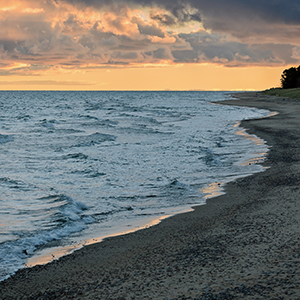Temporal evolution of lake level fluctuations under flood conditions and impacts on the littoral ecosystems

Submitted: 5 April 2023
Accepted: 18 July 2023
Published: 11 September 2023
Accepted: 18 July 2023
Abstract Views: 967
PDF: 114
HTML: 9
HTML: 9
Publisher's note
All claims expressed in this article are solely those of the authors and do not necessarily represent those of their affiliated organizations, or those of the publisher, the editors and the reviewers. Any product that may be evaluated in this article or claim that may be made by its manufacturer is not guaranteed or endorsed by the publisher.
All claims expressed in this article are solely those of the authors and do not necessarily represent those of their affiliated organizations, or those of the publisher, the editors and the reviewers. Any product that may be evaluated in this article or claim that may be made by its manufacturer is not guaranteed or endorsed by the publisher.
Similar Articles
- Rui Ye, Kun Shan, Hailong Gao, Ruibin Zhang, Shuai Wang, Xin Qian, Long-term seasonal nutrient limiting patterns at Meiliang Bay in a large, shallow and subtropical Lake Taihu, China , Journal of Limnology: Vol. 74 No. 3 (2015)
- Patrizia Elena Vannucchi, Manuel Jesús López-Rodríguez, José Manuel Tierno de Figueroa, Elda Gaino, Structure and dynamics of a benthic trophic web in a Mediterranean seasonal stream , Journal of Limnology: Vol. 72 No. 3 (2013)
- Hu He, Xiaolong Zhu, Xiaolan Song, Erik Jeppesen, Zhengwen Liu, Phytoplankton response to winter warming modified by large-bodied zooplankton: an experimental microcosm study , Journal of Limnology: Vol. 74 No. 3 (2015)
- Wojciech Ejankowski, Tomasz Lenard, The effect of ice phenology exerted on submerged macrophytes through physicochemical parameters and the phytoplankton abundance , Journal of Limnology: Vol. 75 No. 1 (2016)
- Adrianna Wojtal-Frankiewicz, Joanna Bernasińska, Tomasz Jurczak, Krzysztof Gwoździński, Piotr Frankiewicz, Marzena Wielanek, Microcystin assimilation and detoxification by Daphnia spp. in two ecosystems of different cyanotoxin concentrations , Journal of Limnology: Vol. 72 No. 1 (2013)
- Andrea Gall, Martin J. Kainz, Serena Rasconi, Daphnia magna fitness during low food supply under different water temperature and brownification scenarios , Journal of Limnology: Vol. 76 No. 1 (2017)
- Csaba Vadadi-Fülöp, Levente Hufnagel, Climate change and plankton phenology in freshwater: current trends and future commitments , Journal of Limnology: Vol. 73 No. 1 (2014)
- Mihir R. Kulkarni, Kalpana Pai, The freshwater diaptomid copepod fauna (Crustacea: Copepoda: Diaptomidae) of the Western Ghats of Maharashtra with notes on distribution, species richness and ecology , Journal of Limnology: Vol. 75 No. 1 (2016)
- Alireza Keikhosravi, Sara Fratini, Christoph D. Schubart, Population genetic structure and demographic history of the freshwater crab Potamon elbursi (Brachyura: Potamidae) from the Alborz Mountains in northern Iran , Journal of Limnology: Vol. 74 No. 3 (2015)
- Cristian Scapozza, Nicola Patocchi, Lake Maggiore: geomorphological genesis, lake-level evolution, and present and future ecosystems importance , Journal of Limnology: Vol. 81 No. s2 (2022): Effects of water level management on lake littorals and downstream river areas
<< < 9 10 11 12 13 14 15 16 17 18 > >>
You may also start an advanced similarity search for this article.

 https://doi.org/10.4081/jlimnol.2022.2141
https://doi.org/10.4081/jlimnol.2022.2141






